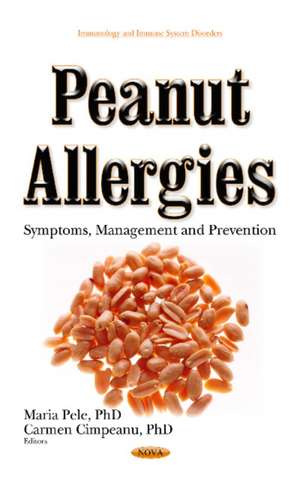Peanut Allergies: Symptoms, Management & Prevention
Editat de Maria Pele, Carmen Campeanuen Limba Engleză Hardback – apr 2016
Preț: 928.66 lei
Preț vechi: 1079.46 lei
-14% Nou
Puncte Express: 1393
Preț estimativ în valută:
177.72€ • 184.42$ • 148.54£
177.72€ • 184.42$ • 148.54£
Carte disponibilă
Livrare economică 22 februarie-08 martie
Preluare comenzi: 021 569.72.76
Specificații
ISBN-13: 9781634847421
ISBN-10: 1634847423
Pagini: 120
Dimensiuni: 155 x 230 x 14 mm
Greutate: 0.34 kg
Editura: Nova Science Publishers Inc
Colecția Nova Science Publishers Inc
ISBN-10: 1634847423
Pagini: 120
Dimensiuni: 155 x 230 x 14 mm
Greutate: 0.34 kg
Editura: Nova Science Publishers Inc
Colecția Nova Science Publishers Inc
Cuprins
Preface; Introduction: Peanut Allergies; Symptoms, Management & Therapy; Peanut Allergens; Peanut Allergens Cross Reactivity & Stability; Methods for Detecting, Quantifying & Characterising Peanut Allergens; Peanut Allergies: Prevention; Index.









